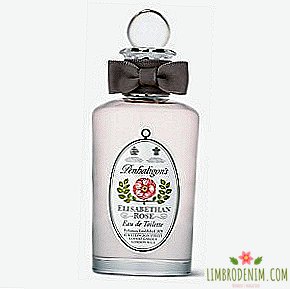From someone else's shoulder: How instagram dictates new fashionable standards to us
Instagram knows us better than we know ourselves. Behind this knowledge lies an analysis of our behavior, big data and posts to which we put likes. If Facebook collects our personal information, then instagram collects our aesthetic preferences. In recent years, it has already ceased to be just an application for iPhone - for many of us it has become a major hobby, best friend, even a job. On the basis of our habit of constantly scrolling the tape, instagram blossomed both as a space for personal blogs and as a place to shop.

According to Forbes, the popularity of the social network has made it one of the main advertising sites: over the past year, the number of advertisers who came to instagram doubled and grew to a million, making it, in fact, one of the most successful platforms for social "ingimage" ). The latter is measured in comments, likes, scharas and general visibility of the post on the Internet.
There are many reasons for such coverage: firstly, instagram is always at hand, and secondly, the picture is at the forefront, and it seems that as long as it looks cool, success is guaranteed. Visual marketing, according to research, is one of the easiest ways to set up communication with a customer. So, for example, having heard an advertisement on the radio, we memorize 10 percent of the text, another thing is the picture. We liked the visually aroused keen desire to have - no matter, new clothes or personal style.
This also raises questions - are we always able to distinguish copyright content from advertising, given that so far not all bloggers tag it? Does the instagram require you to comply with the new "aesthetic standard" and does it lead to the dictates of someone else's style? Regularly saving photos of bloggers and online stores, do we not lose ourselves?
We are really inspired by the same people and accounts and are trying to borrow something from their images and lifestyle. If earlier with the questions "what to wear?" and "where to buy it?" we turned to glossy magazines, now the solution is always at hand. We follow a lot of lifestyle bloggers, who dictate trends not only to us, but also to fashionable media.
Are we always able to distinguish author content from advertising? Regularly saving photos of bloggers and online stores, do we not lose ourselves?
The trend set by the popular blogger is supported by others - so the number of successful bloggers is growing exponentially, and the trend is rapidly spreading across the social network. Hundreds, if not thousands of French women, for example, lay out "natural" photos without treatment, which always look fresh and beautiful (especially shaggy and without cosmetics), invariably spending evenings on the Parisian roof with a bottle of roses and equally beautiful friends. Following the conventional Zhanna Damas with a straw bag in the spirit of Jane Birkin, hundreds of such girls followed, and Lotta Volkova was followed by hundreds more young people in time-consuming things from the 90s and tights in a net. Let us ask ourselves: is a straw bag and flared jeans with a high waist in 2018 - is it our own choice or instagram influence?
Out of a desire to support the same trends, subcultures were born, the adepts who dressed about the same, listened to the same music and went about the same places. It seems that today “popular instagram girls” (95% of the so-called influenza women are women) claim the formation of a new subculture, who also dress in approximately the same way and are photographed in approximately the same places. The instagram even had the time to form selling "archetypes": a French woman with a straw bag in a-la Jacquemus shirt from Zara and a careless bang, a fashion editor in an overseas jacket and earrings as if from a Céline advertising campaign, a freelance stylist from Berlin in merchant 032c and Sneakers found somewhere in Kreuzberg on Sunday morning, a “natural” model that will look better than you, even if it turns into a bath mat, curvy Yeezy cycling girls with matte lipstick that could come from Kylie Jenner from afar, and so on - the list gets I quite long.
There are many instagram brands that earn on these "archetypes". They offer all sorts of blouses with ruffles, large earrings of unusual shape and other objects of desire, which have already managed to migrate to the selection of glossy media. These include the brand of Jeanne Damas Rouje, and hundreds of brands of comfortable underwear, large earrings and French-style tops. Most popular create a community of followers around him.
And even realizing that there are tons of work and paid applications behind thousands of subscribers and likes, which in every possible way help to monetize content up to the correct time for posting photos, we cannot stop looking at them.
On the streets of any European city - in Tbilisi, Berlin, Paris and Moscow - we meet people similar to each other who wear the same brands.
New instagram algorithm in 2018 only exacerbates the situation. For example, a company representative comments that now we are the first to see the posts of those users who are followed and we like more often, as well as popular posts that are gaining more "ing-age" in the first hour. So the girlfriend with a hundred subscribers, you will find in your feed last.
The logic of the Explore tab is also based on this information: in it we see a selection that is based on our likes and interests. Without any effort, we get our "individual" unified content. Founder of the portal Man Repeller and popular blogger Leandra Medin, who spends more time on instagram than many of us, comment on the effect of instagram algorithms: “The real danger is when you realize that you want to make changes to your style, but is too fixated on content, which gives you an algorithm. "
If you think about it, the same source of inspiration always united millions of people: once all women in the Soviet Union dreamed of a fur hat, like Barbara Brylskaya, and Western ones with no less perseverance imitated the stars of Hollywood or the European art house. In addition, we borrow some stylistic examples from instagram girls, there is nothing wrong with that — fashion trends are built on this, and it’s not that we have a way out. But because of social networks, we have become much more passive in the search for new, and rarely sifted consumed content for quality and advertising.
As a result, on the streets of any European city - in Tbilisi, Berlin, Paris and Moscow - we meet similar people (donating a good part of their attention to social networks), who wear the same brands or their prototypes. If we go beyond the limits of the algorithm, most likely, we are all waiting for many fascinating discoveries. And who knows, maybe even the opportunity to turn from a slave into a master.
Photo: Rouje





